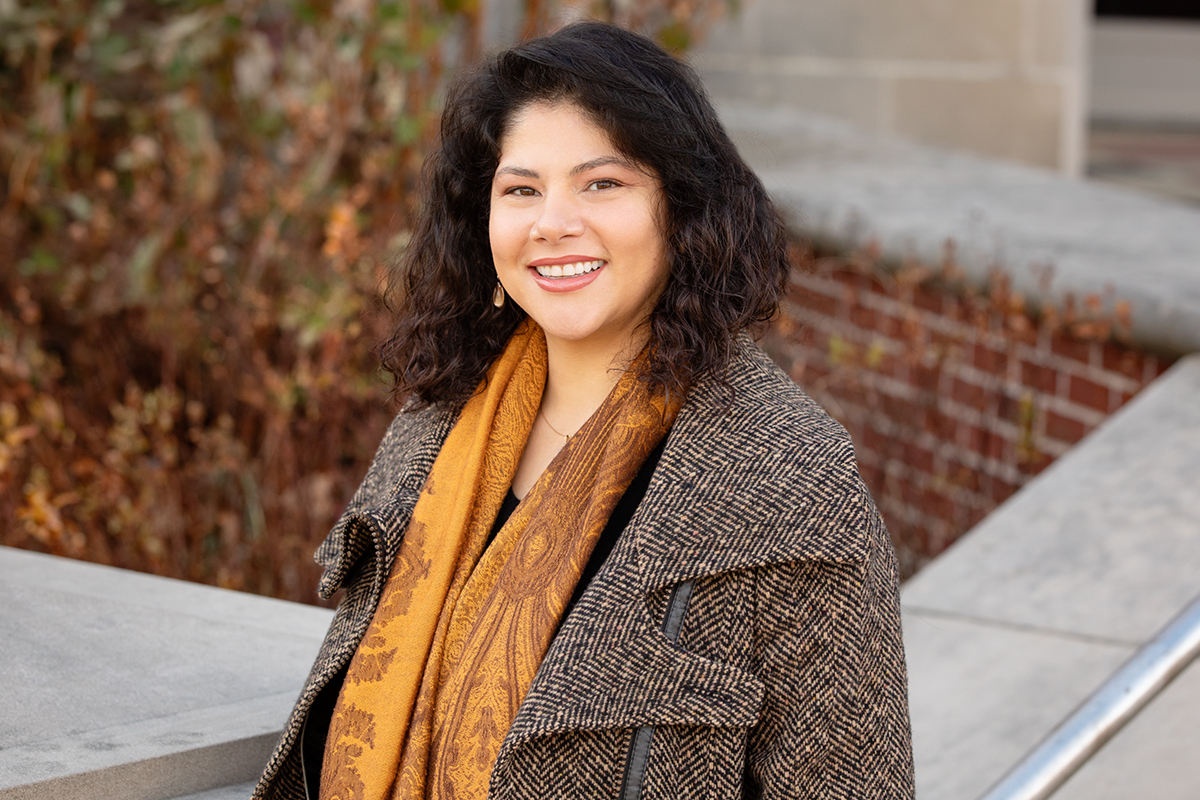
University of Illinois Urbana-Champaign social work professor Liliane Windsor is co-leading a project that is exploring ways to mitigate the spread of COVID-19 among marginalized and hard-to-reach populations in East St. Louis, Illinois, using an adaptation of a public health model developed for HIV.
Photo by L. Brian Stauffer
CHAMPAIGN, Ill. — A project that is underway in East St. Louis, Illinois, is investigating strategies for overcoming barriers to COVID-19 testing and vaccination among more than 548 medically and socially vulnerable residents of St. Clair County.
The National Institute of Allergies and Infectious Diseases provided $975,000 in funding for the project, which is co-led by social work professor Liliane Windsor, of the University of Illinois Urbana-Champaign; sociologist Ellen Benoit, of the North Jersey Community Research Initiative; social work professor Rogério M. Pinto, of the University of Michigan; and Joe Harper, the executive director of the Comprehensive Behavioral Health Center.
The project is being implemented at CBHC in downtown St. Louis in collaboration with five practitioners and community members from St. Clair County who are members of the project's community collaborative board.
The project is an extension of Windsor and Benoit's ongoing work with similar marginalized, hard-to-reach populations in Newark, New Jersey, where they adapted a public health model – the HIV of continuum of care treatment cascade – to address COVID-19. The goal in both locations is to deploy effective interventions to reach people who are medically and socially vulnerable to COVID-19, help them obtain testing, refer them to treatment and/or prevention services, and increase adherence to public health communications.
The intervention includes critical dialogues with people who are unlikely or unwilling to follow COVID-19 public health recommendations, engaging them in discussions about the beliefs that impact their decisions on whether to wear masks or get vaccinated.
"The facilitator helps them analyze their beliefs about COVID-19 and preventive behaviors and whether those beliefs are based on accurate or inaccurate information," Windsor said. "But more importantly, it raises their awareness that whatever decision they make, these beliefs have consequences for themselves and the community."
In Newark, participants completed two interventions and three interviews over a five-week period.
"The new site in St. Clair County will allow us to extend the follow-up period from five weeks to six months and determine whether the effects are replicable with similar populations in a different state," Windsor said. "We chose St. Clair County because the population is very similar to that of Essex County, New Jersey – an underserviced area with all kinds of health disparities and people with comorbidities."
Both counties have large Black populations, similar histories of struggles with racism and loss of manufacturing jobs, which created poverty, exclusion and myriad health inequities. Many residents have poor health and work in frontline industries that heighten their risks of exposure to the virus that causes COVID-19.
Despite the two areas' similarities, the researchers said there are significant differences, too. While Newark has more health care providers, residents there are twice as likely to be uninsured ̶̵ 12.3% vs. 6.6% of their counterparts in the East St. Louis area.
Throughout the pandemic, people of color and low-income communities have experienced limited access to services such as COVID-19 testing and vaccinations. To overcome that barrier, mobile testing units will travel to participants in East St. Louis who would be unable to obtain COVID-19 tests otherwise, Windsor said.
A key principle of the project is its relevance to the populations involved and engaging community members in all aspects of the research – from data collection to interpretation and dissemination of the results.
"We involve community members in every step of the research process in order to bring direct benefits to these communities and enhance the quality of the research," Benoit said. "We accomplish this through systematic knowledge-building activities such as trainings and group dialogues, which seek to merge experiential and scientific knowledge."
Community engagement promotes access to difficult-to-reach racial, ethnic and cultural groups, Benoit said.






